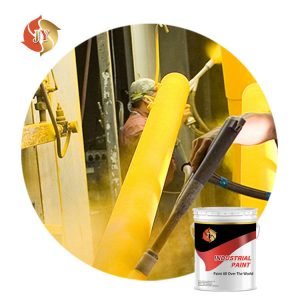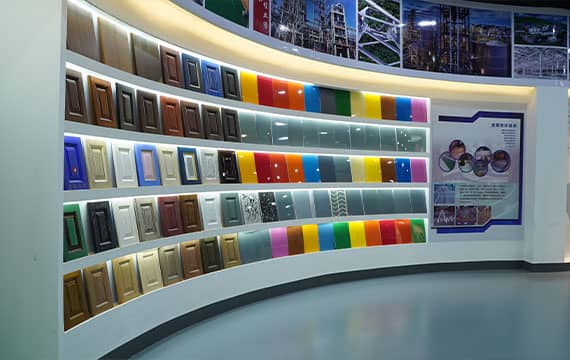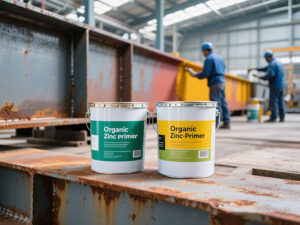
JINYU PAINT® Zinc Rich Paint
Zinc rich paint is a special anti-corrosion coating containing a high concentration of zinc dust. Its primary function is to protect metal surfaces from corrosion through the electrochemical protection mechanism of zinc. The zinc dust acts as a “sacrificial anode,” meaning it corrodes preferentially to protect the underlying metal. This mechanism gives zinc rich paint excellent anti-corrosion performance in harsh environments.
Zinc rich paint is a high-performance anti-corrosion solution that leverages zinc’s electrochemical properties to protect metal surfaces. It is widely used in steel structures, marine, and industrial applications. However, its higher cost and strict application requirements must be considered when selecting the right coating system.
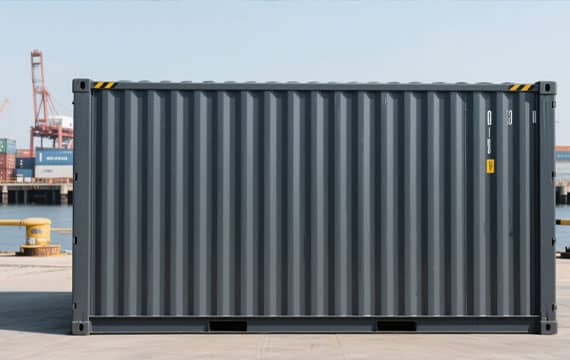

JINYU PAINT® Zinc Rich Paint
Types of Zinc Rich Paint
Zinc rich paint is generally divided into two categories: organic zinc rich paint and inorganic zinc rich paint.
Organic Zinc Rich Paint
- This type uses organic resins such as epoxy or polyurethane as binders, with a zinc dust content typically between 80%–85%.
- It offers good adhesion, weather resistance, and ease of application but has lower heat resistance, conductivity, and solvent resistance.
- Common examples include epoxy zinc rich primer.
Inorganic Zinc Rich Paint
- This type uses inorganic binders like silicates or ethyl silicate, with zinc dust content usually between 85%–95%.
- It provides superior heat resistance, conductivity, and chemical resistance, making it suitable for high-temperature and harsh environments.
- Inorganic zinc coatings require strict surface preparation (e.g., abrasive blasting) and application in high humidity (above 65% RH).
Advantages of Zinc Rich Paint
Zinc rich paint, particularly epoxy zinc rich primer, is an essential anti-corrosion coating in modern industry and construction due to its superior performance and wide applications. Below is a detailed analysis of its key advantages based on researched data:
1. Superior Corrosion Resistance
The primary advantage of zinc rich paint is its exceptional anti-corrosion performance. The zinc dust in the coating provides both a physical barrier and cathodic protection, where zinc acts as a sacrificial anode, corroding before the base metal. This dual mechanism makes it highly effective in harsh environments (e.g., marine, industrial, coastal), significantly extending the lifespan of metal structures.
2. Excellent Adhesion & Mechanical Strength
Zinc rich coatings exhibit strong adhesion to metal surfaces, even on abrasive-blasted steel. The hardened film is impact-resistant and durable, making it suitable for industrial applications.
3. Weather & Chemical Resistance
These coatings offer high resistance to salt spray, humidity, acids, alkalis, and solvents, making them ideal for chemical plants, oil & gas facilities, and power infrastructure.
4. Weldability & Ease of Application
A major benefit is weldability—zinc rich paint does not interfere with welding quality or damage during cutting. Additionally, epoxy zinc primer is easy to apply without high-temperature curing, reducing energy costs.
5. Eco-Friendly & Cost-Effective
With growing environmental concerns, water-based inorganic zinc coatings (low VOC) are gaining popularity. Compared to hot-dip galvanizing, zinc rich paint is more economical and environmentally friendly.
6. Wide Applicability
Suitable for various metal surfaces, including steel structures, ships, bridges, storage tanks, and pipelines, it works for both new constructions and maintenance projects.
7. Long-Term Durability
Zinc rich coatings provide long-lasting protection, reducing maintenance costs. For example, inorganic zinc coatings outperform epoxy variants in oil tank linings.
8. Strong Compatibility
They pair well with high-performance topcoats (e.g., epoxy mica iron intermediate + polyurethane finish) for enhanced multi-layer corrosion protection.
9. Flexible Application Methods
Can be applied via airless spray, brush, or roller, adapting to different project scales. Thinners further improve workability.
10. Economic Efficiency
Though initial costs may be higher, zinc rich paint reduces long-term expenses by minimizing repairs and recoating needs compared to traditional methods.
Anti-Corrosion Mechanism of Zinc Rich Paint
The protective performance of zinc rich paint relies on the following mechanisms:
- Cathodic Protection – The zinc dust forms a protective layer that corrodes first, shielding the metal underneath.
- Barrier Effect – The zinc layer blocks oxygen and moisture, slowing down corrosion.
- Chemical Reaction – Zinc can react with iron ions to form stable compounds, further enhancing corrosion resistance.
Applications of Zinc Rich Paint
Zinc rich paint is widely used in industries requiring high corrosion resistance, such as:
- Steel Structure Protection – Commonly used in bridges, buildings, and port facilities.
- Marine & Offshore – Ideal for ships, storage tanks, shipping containers, and offshore platforms.
- Industrial Equipment – Protects oil & gas pipelines, chemical plants, and power facilities.
- Underground & Submerged Structures – Used for pipelines and underwater constructions.
Application Requirements for Zinc Rich Paint
Proper application is critical for performance:
Surface Preparation – Steel surfaces must be cleaned (e.g., abrasive blasting) for optimal adhesion.
Environmental Conditions – Inorganic zinc coatings require high humidity for curing.
Coating System Compatibility – Often paired with intermediate/topcoats (e.g., epoxy mica iron intermediate paint, acrylic polyurethane topcoat) for enhanced durability.
FAQS of Zinc Rich Paint
Where is zinc rich paint commonly used?
Zinc rich paint is widely used in industries requiring heavy-duty corrosion protection, such as:
- Marine & offshore: Ships, oil rigs, and port infrastructure.
- Industrial steelwork: Bridges, storage tanks, and power plants.
- Automotive & aerospace: Underbody coatings and structural components.
- Oil & gas: Pipelines and refinery equipment.
Its ability to withstand saltwater, UV exposure, and chemical spills makes it a top choice for harsh environments.
How long does zinc rich paint last?
The lifespan depends on the coating type, environment, and maintenance. Inorganic zinc coatings can last 20+ years in moderate conditions, while epoxy zinc primers typically provide 10-15 years of protection. Proper surface preparation (e.g., abrasive blasting) and topcoat application (e.g., polyurethane finish) significantly extend durability.
Can zinc rich paint be applied over rust?
No, zinc rich paint requires a clean, rust-free surface for optimal adhesion. Abrasive blasting (SA 2.5 or SA 3) is recommended to remove mill scale, rust, and contaminants. Applying it over rust reduces effectiveness and may lead to premature coating failure.
Is zinc rich paint safe for welding?
Yes, one of its key advantages is weldability. Unlike some coatings, zinc rich paint does not release toxic fumes during welding. However, inorganic zinc coatings may require local grinding to ensure proper weld quality.
What are the limitations of zinc rich paint?
While highly effective, it has some drawbacks:
- High zinc content increases material costs.
- Inorganic zinc coatings require strict humidity control during application.
- Not ideal for acidic or alkaline environments without a protective topcoat.
- Surface preparation is more demanding than standard paints.
How does zinc rich paint compare to hot-dip galvanizing?
Zinc rich paint offers similar corrosion resistance but with easier application and lower costs. Unlike hot-dip galvanizing, which requires dipping steel in molten zinc, zinc rich paint can be sprayed or brushed onto complex structures. However, galvanizing may last longer in extreme conditions.
Can zinc rich paint be used as a standalone coating?
For short-term protection, yes. But for long-term durability, it should be part of a multi-layer system:
- Primer: Zinc rich epoxy.
- Intermediate coat: Epoxy mica iron.
- Topcoat: Polyurethane or acrylic.
This combination enhances UV resistance, abrasion resistance, and chemical protection.
Is zinc rich paint environmentally friendly?
Water-based inorganic zinc coatings are low-VOC and eco-friendly, complying with EPA and REACH regulations. Traditional solvent-based zinc primers contain higher VOCs, requiring proper ventilation and PPE during application.
How Featured JINYU Paints Are Made?
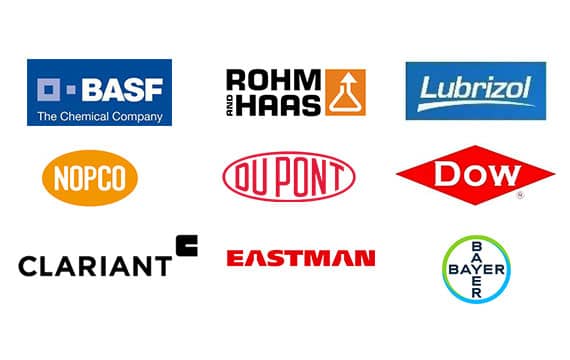
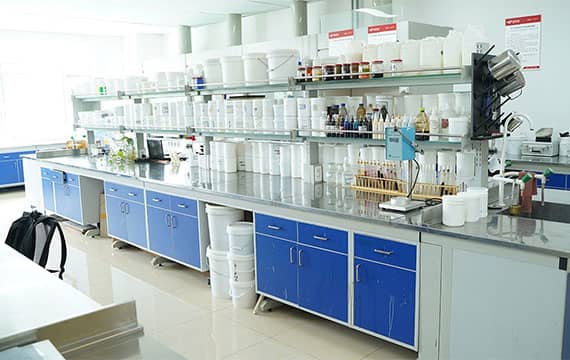
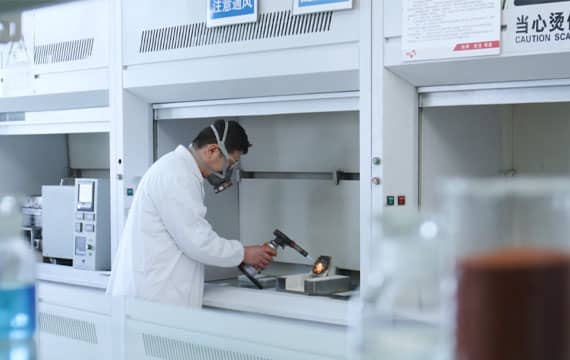
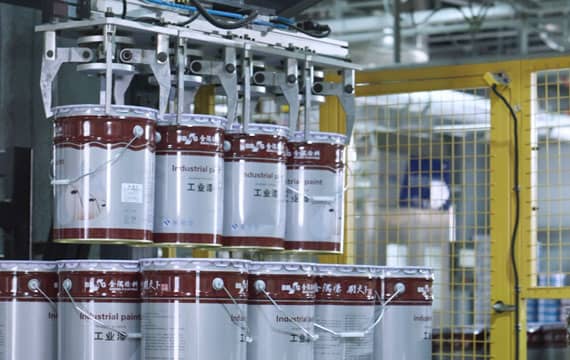
JINYU® boasts a wide range of color options and customization possibilities. Color experts work closely with customers to create unique shades and finishes to suit their specific projects.


The Applications of Featured JINYU PAINT®
JINYU PAINT® provides a comprehensive range of high-performance coatings, including epoxy floor coatings, industrial coatings, fireproof coatings, and architectural coatings for interior and exterior walls. Our solutions are designed for durability, aesthetics, and protection across various applications, from residential and commercial buildings to industrial facilities and fire safety projects. Whether you need seamless flooring, corrosion resistance, fire protection, or decorative wall finishes, JINYU PAINT® offers expert coatings to enhance and protect every surface.










LATEST FAQS at JINYU PAINT®
FAQ
- How to Prevent Thermal Shock Damage in Food-Processing Floors: The Urethane Concrete Solution
- 7 Expert Strategies to Extend the Lifespan of Polyurethane Flooring in High-Traffic Areas
- How to Fix Peeling or Delaminating Polyurethane Flooring: A Definitive Repair Guide
- What are the best practices for installing polyurethane flooring in a pharmaceutical cleanroom?
- What flooring type works best for logistics warehouses with forklift traffic?
Contact Us
Contact: Ms. Sabella Wei
Phone: 86-022-83859963
Whatsapp: 15822925523
